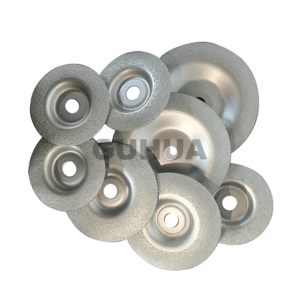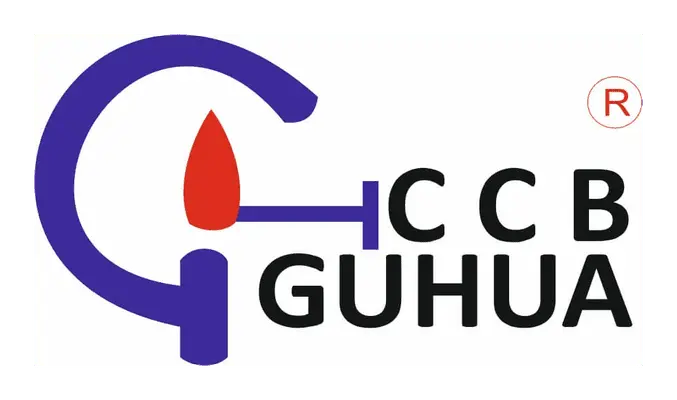Grinding plates are essential tools in surface preparation and material removal. They are used across industries such as construction, metalwork, and stone fabrication, offering the ability to grind, smooth, and shape surfaces efficiently. Whether you’re working with concrete, metal, or stone, understanding how grinding plates work, their types, and their applications can significantly impact the success of your project. In this comprehensive guide, we’ll explore everything you need to know about grinding plates, including how to choose the right one for your needs.
What Is a Grinding Plate?
A grinding plate is a flat disc that attaches to a grinder or grinding machine. Its primary function is to grind, smooth, or cut material from surfaces, leaving them prepared for further processing. The plate’s surface is typically embedded with abrasive materials like diamonds or carbide particles, allowing it to grind through tough surfaces efficiently. Grinding plates are versatile tools found in various industries, playing a pivotal role in surface preparation and finishing tasks.
Types of Grinding Plates
There are three main types of grinding plates, each tailored to specific applications. Understanding the differences between them will help you select the right one for your project.
1. Diamond
Diamond plates are widely regarded as the most effective and durable type. These plates feature diamond segments that offer superior grinding performance, especially on hard materials like concrete, stone, and ceramic. Due to their exceptional hardness, diamonds cut through materials that would wear down other types of abrasives.
Applications:
- Concrete floor preparation
- Stone surface polishing
- Removing tough coatings
Advantages:
- Longevity and durability
- High grinding efficiency
- Ideal for hard materials
2. Metal-Bond
Metal-bond plates are designed for heavy-duty applications, making them suitable for grinding hard surfaces like stone and concrete. In these plates, metal holds the abrasive particles in place, allowing them to withstand the demands of large-scale projects.
Applications:
- Industrial grinding
- Surface leveling in construction
- Heavy material removal
Advantages:
- Durability for large projects
- Effective for tough materials
- High abrasion resistance
3. Resin-Bond
Resin-bond use resin as the bonding agent for their abrasive particles. These plates are best suited for softer surfaces or when fine precision is required. Resin-bond plates are often used in finishing tasks, where a smooth and polished surface is essential.
Applications:
- Polishing stone or ceramic
- Fine surface finishing
- Precision grinding tasks
Advantages:
- Suitable for delicate work
- Produces smooth finishes
- Ideal for precision tasks

How Do Grinding Plates Work?
Grinding plates function by rotating at high speeds and bringing their abrasive surface into contact with the material being worked on. The friction generated during this process wears down the surface, either smoothing it out or removing excess material. The speed and pressure applied depend on the specific grinding task and the machine used.
The abrasive materials embedded in grinding plates vary depending on the application. For instance, diamond plates are highly effective for hard surfaces, while resin-bond plates are more suited for delicate, precision-based work.
They are attached to various machines, including handheld grinders and large floor machines. The type of machine and the power it provides affect the efficiency and precision of the grinding process.
Applications of Grinding Plates
These plates are used in a variety of industries, each requiring specific applications to achieve desired outcomes. Below are some common uses:
1. Concrete Floor Preparation
In the construction industry, grinding plates are essential for preparing concrete floors. They are used to level, smooth, and remove coatings from concrete surfaces, ensuring the surface is ready for polishing, sealing, or applying new coatings. Diamond plates are often chosen for this task due to their ability to efficiently cut through hard concrete.
2. Stone Fabrication
<p&gt;In stone fabrication, grinding plates are crucial for shaping and polishing surfaces such as countertops, floors, and tiles. Whether working with granite, marble, or other types of stone, it helps achieve smooth finishes, making them indispensable for fabricators.
3. Metal Grinding
Metalworking often requires grinding plates to smooth surfaces, remove welds, and prepare parts for fabrication. Metal-bond grinding plates are commonly used for these tasks because they are durable enough to withstand the tough demands of metal surfaces.</p>
4. Tile and Ceramic Work
Grinding plates are often used in the tile and ceramic industries for smoothing and shaping surfaces. Whether cutting tiles or polishing ceramics, resin-bond plates provide the precision and fine finish needed for detailed work.
5. Removal of Coatings
One of the most common applications of grinding plates is the removal of coatings such as paint, adhesives, or epoxy. By grinding away these layers, surfaces are prepared for new treatments or applications. Diamond plates are particularly effective for this purpose, as they can cut through thick coatings with ease.
Choosing the Right Grinding Plate
Selecting the right grinding plate for your project depends on several factors, such as the type of surface, the desired finish, and the machine you’re using. Here are some tips to guide your selection process:
1. Surface Material
Identify the material you’ll be working on. Hard surfaces like concrete or stone require diamond grinding plates, while softer surfaces, such as tiles or ceramics, may only need resin-bond plates for fine polishing.
2. Bond Type
Grinding plates come in different bonds, such as metal-bond and resin-bond. Metal-bond grinding plates, offered by CCb Ultrahard Abrasives Pvt Ltd, are more durable and are suitable for tough surfaces, while resin-bond plates from CCb Guhua are ideal for softer surfaces and precision tasks. Choose the bond based on the hardness of the material you’ll be grinding.
3. Grit Size
The grit size of a grinding plate refers to the coarseness or fineness of the abrasive material. Coarse grits are used for aggressive grinding tasks, such as removing coatings or leveling surfaces, while fine grits are used for polishing and finishing tasks.
4. Machine Compatibility
Make sure the grinding plate you choose is compatible with your grinding machine. Different machines may require different plate sizes and attachment systems, so verify compatibility before making your selection.
Maintenance of Grinding Plates
Proper maintenance of plates is essential for ensuring their longevity and efficiency. Here are a few tips to help maintain your grinding plates:
1. Regular Cleaning
After each use, clean the grinding plate to remove any material buildup. Debris can clog the abrasive surface, reducing the plate’s effectiveness.
2. Check for Wear
Over time, grinding plates will wear down, especially when used on hard surfaces. Regularly inspect your plates for signs of wear, and replace them as needed to maintain performance.
3. Proper Storage
Store this plates in a cool, dry place to prevent rust or damage. Proper storage will extend their lifespan and ensure they remain ready for use.
Conclusion
Grinding plates are vital tools in surface preparation, offering versatility across various industries such as construction, metalworking, and stone fabrication. By understanding the different types of plates, their applications, and how to maintain them, you can ensure optimal performance in your projects.
Whether you need to grind down concrete, polish stone, or remove coatings, selecting the right grinding plate is key to achieving your desired results.
